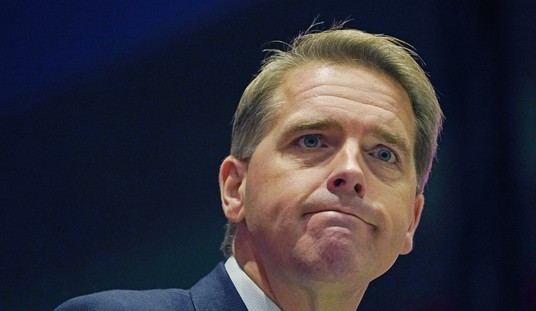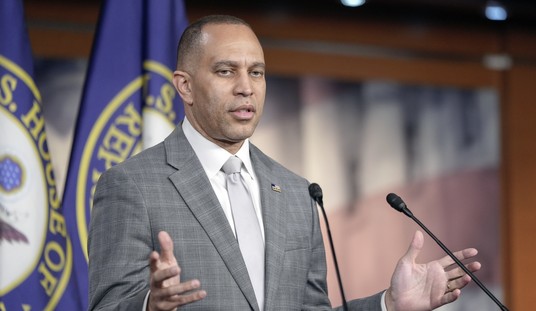Days after shocking the world with his upset victory in the 2016 presidential election, Donald Trump espoused his hope of negotiating the "ultimate deal" between Israel and the Palestinian Arabs to resolve the "war that never ends." As Trump told The Wall Street Journal at the time: "As a deal maker, I'd like to do ... the deal that can't be made. And do it for humanity's sake."
Over eight years later, back in the White House following a Democratic interregnum and with Israeli Prime Minister Benjamin Netanyahu at his side, Trump confirmed his interest in forging the "ultimate deal." Crucially, however, Trump's basic parameters of such a deal will not, to put it mildly, be those long favored by the bipartisan foreign policy establishment.
Before getting into his latest proposal, let's flash back to Trump's first term.
From 2017 to 2021, Trump governed as the most pro-Israel American president, by far, since the modern State of Israel was established in 1948. In January 2020, after already taking such measures as withdrawing the U.S. from former President Barack Obama's Iran nuclear deal, moving the U.S. embassy to Jerusalem, and recognizing Israeli sovereignty over the Golan Heights, Trump -- again standing at the White House with Netanyahu -- unveiled his "Peace to Prosperity" plan to end the Israeli-Palestinian conflict. Although imperfect, it was by far the most pro-Israel plan for resolving the conflict an American president had ever proposed.
Because the "Peace to Prosperity" plan legitimized Israel applying its sovereignty over disputed areas of the Jordan Valley and Judea and Samaria (the "West Bank"), many of the Palestinians' traditional Arab backers were piqued. In June 2020, the United Arab Emirates' ambassador to the U.S., Yousef Al Otaiba, took the unprecedented step of publishing a Hebrew-language op-ed warning Israel not to go forward with asserting any additional sovereignty. Yet only two months later, in August 2020, the UAE became the first Arab country in two and a half decades to establish peace with Israel. Bahrain, Morocco and Sudan soon followed, joining the UAE in the Abraham Accords circle of peace.
Recommended
In one fell swoop, Trump and Netanyahu did more to achieve Israeli-Arab rapprochement than all previous American presidents and Israeli prime ministers combined. They debunked the failed consensus -- the ruinous shibboleth pushed for decades by Washington's professional "peace process" cartel that only further Israeli territorial concessions could yield peace. The "peace process-ers" pushed their "inside-out" approach: Create a new Palestinian state, then the Arab states will normalize ties with Israel. Trump and Netanyahu inverted the playbook, going for a novel "outside-in" approach.
It worked like a charm. As both leaders recognized, the Hamas-overrun Gaza Strip has already been, ever since Israel's 2005 unilateral withdrawal, a miniature "two-state solution" in action. And it has been an abject disaster.
That brings us up to the present.
Prior to this week, Trump had alluded to the idea that he wanted Egypt and Jordan -- the latter of which quite literally was established as the "Palestinian" state under the terms of the European powers' post-World War I settlement and the British Mandate for Palestine -- to absorb the Arab population of Gaza. He has since doubled down. The idea of such a population transfer is unpopular in the Arab world, to put it mildly. But Trump has overcome such resistance before.
Three consecutive presidents -- Bill Clinton, George W. Bush and Obama -- failed to fulfill the Jerusalem Embassy Act of 1995, which mandated moving the U.S. embassy in Israel to Jerusalem, by issuing "national security" waivers every six months. All were scared of the reaction in the proverbial "Arab street." Trump didn't care and did it anyway. The reaction, it turns out, was fairly muted.
Suffice it to say Jordanian King Abdullah II's trip to the White House on Tuesday will be interesting.
But it turns out population transfer to Jordan and Egypt is only the first half of what Trump has in mind. He shocked everyone around him -- including, it seems, White House Chief of Staff Susie Wiles -- when he casually but assertively stated that the United States intends to "take over" Gaza after Israel's war against Hamas. The U.S. will "own" Gaza, Trump said, and make it a "Riviera of the Middle East." If we are taking Trump literally and not just seriously, to alter Salena Zito's popular 2016 quip, it seems part two of the plan (U.S. ownership of Gaza) is contingent on part one (population transfer of the Arabs there).
Or perhaps we should not take Trump literally. Perhaps this is, much like the "Peace to Prosperity" plan in 2020, a negotiating chip in a bigger plan -- the much-desired entrance of Saudi Arabia into the Abraham Accords alliance, maybe. And there is certainly some early second-term data in favor of the "negotiating chip" theory: Trump's recent deferral of 25% tariffs on both Canada and Mexico in response to those two countries' leaders agreeing to send troops to their respective borders with the U.S., for instance.
It's difficult to know exactly what Trump is thinking here. There are real reasons for skepticism -- but there are also real reasons for hope. He's done this before. Let's be patient and watch the shibboleth-buster in action. He may very well surprise us yet again.

























Join the conversation as a VIP Member